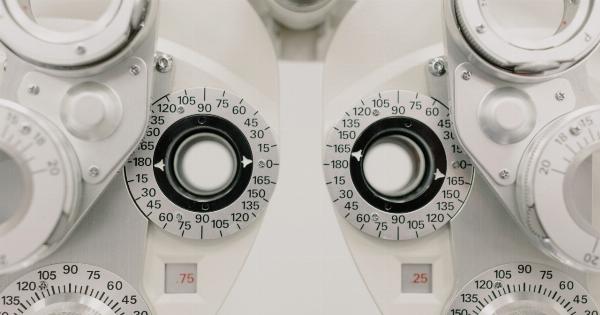Proper body alignment is one of the keys to achieving optimal health and wellness. The alignment of your spine and posture affects everything from your breathing to your digestion to your overall energy levels.
Poor posture can lead to tension, pain, and discomfort, whereas proper body alignment can help to alleviate these issues.
What is Proper Body Alignment?
Proper body alignment is when your head, neck, and spine are in a straight line. This means that your ears are over your shoulders, your shoulders are over your hips, and your hips are over your feet.
When your body is properly aligned, your muscles can relax, your organs are able to function properly, and your circulation is optimized.
Why is Proper Body Alignment Important?
Poor posture and improper body alignment can lead to a range of health problems. It can cause tension headaches, neck and shoulder pain, low back pain, and even digestive issues.
Poor posture can also affect your breathing and your ability to perform physical activities, which can lead to decreased energy levels and fatigue. Proper body alignment, on the other hand, can help to improve your energy levels, reduce tension and pain, and promote overall health and wellness.
How to Achieve Proper Body Alignment
Proper body alignment is something that can be achieved with practice and awareness. Here are some tips to help you achieve proper body alignment:.
1. Keep Your Shoulders Relaxed
One of the keys to achieving proper body alignment is to keep your shoulders relaxed. This means that you should avoid hunching over or tensing your shoulders up towards your ears.
Instead, try to keep your shoulders back and down, as if you’re sliding them down your back. This will help to keep your spine properly aligned.
2. Engage Your Core Muscles
Your core muscles are the muscles in your abdominal area that help to support your spine and promote proper posture. To engage your core, try inhaling deeply, then exhaling while pulling your belly button in towards your spine.
This will help to activate your core muscles and support your spine.
3. Align Your Ears, Shoulders, and Hips
As mentioned earlier, proper body alignment is when your ears are over your shoulders, your shoulders are over your hips, and your hips are over your feet. Take a moment to check your alignment and adjust accordingly.
This will help to optimize your posture and reduce tension in your neck, shoulders, and back.
4. Stand and Sit with Awareness
One of the best ways to achieve proper body alignment is to become aware of how you’re standing and sitting throughout the day. Be mindful of your posture and make small adjustments throughout the day as needed.
When you’re sitting, try to keep your back straight and your feet flat on the floor. When you’re standing, keep your weight evenly distributed between both feet.
5. Stretch and Move Regularly
To maintain proper body alignment, it’s important to stretch and move your body regularly. This can help to prevent muscle tension and tightness, which can lead to poor posture and alignment.
Try incorporating some light stretching or movement breaks into your daily routine.
6. Use Proper Body Mechanics
Another important aspect of proper body alignment is using proper body mechanics when lifting or carrying objects. This means bending at the knees and lifting with your legs instead of your back.
It also means avoiding repetitive motions that can put strain on your body.
7. Get Professional Help if Needed
If you’re having trouble achieving proper body alignment, it may be helpful to seek out the help of a healthcare professional.
A physical therapist or chiropractor can help you identify any alignment issues and provide exercises or treatments to help you improve your posture.
The Benefits of Proper Body Alignment
Proper body alignment offers numerous benefits for your health and wellness. Here are just a few:.
1. Reduced Pain and Tension
Proper body alignment can help to reduce tension and pain in your muscles, particularly in your neck, shoulders, and back. It can also help to alleviate tension headaches and improve your overall range of motion.
2. Improved Breathing
When you have proper body alignment, your lungs have more space to expand and contract, which can improve your breathing. This can help to increase your energy levels and reduce feelings of fatigue.
3. Better Digestion
Poor posture can put pressure on your digestive organs and lead to digestive issues. Proper body alignment can help to reduce this pressure, improving your digestion and reducing feelings of bloating or discomfort.
4. Increased Energy Levels
When your body is properly aligned, your muscles are able to relax and your circulation is optimized. This can help to increase your energy levels and reduce feelings of fatigue or sluggishness.
5. Improved Physical Performance
Proper body alignment can also improve your physical performance, whether you’re an athlete or simply trying to stay active. It can help to improve your range of motion, reduce your risk of injury, and enhance your overall balance and stability.
Conclusion
Proper body alignment is an essential aspect of achieving optimal health and wellness. By becoming aware of your posture and making small adjustments throughout the day, you can improve your alignment and reduce tension and pain in your body.
Incorporating movement and stretching into your daily routine and using proper body mechanics can also help you maintain proper alignment and reduce your risk of injury. By prioritizing proper body alignment, you can enjoy the many benefits it offers for your health and wellbeing.






























